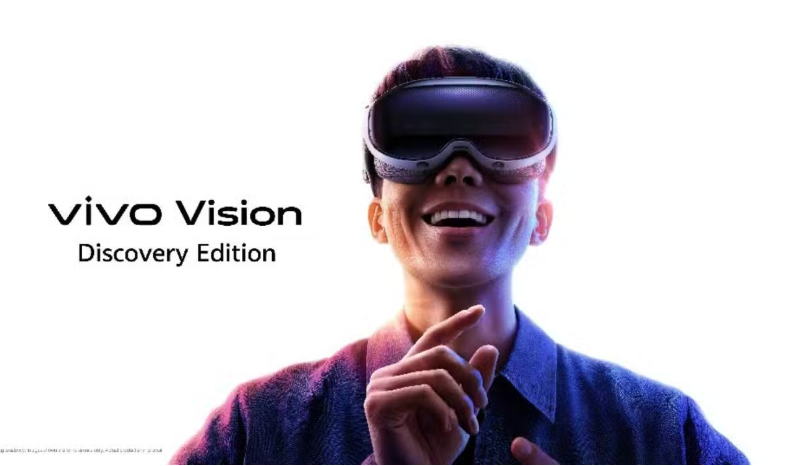Chinese tech giant vivo has marked its 30th anniversary with a groundbreaking announcement, unveiling its first mixed reality (MR) headset alongside a bold new imaging strategy. The move underscores vivo’s ambition to strengthen its position in both the immersive technology space and mobile imaging innovation, two of the fastest-growing segments in consumer tech today.
The anniversary celebrations, which highlighted vivo’s journey from a rising mobile manufacturer to a globally recognized technology brand, showcased not only its achievements but also its vision for the future.
The First Mixed Reality Headset by Vivo
Vivo’s debut in the mixed reality (MR) headset market signals its entry into a domain currently dominated by players like Meta, Apple, and HTC. The headset combines augmented reality (AR) and virtual reality (VR) to deliver immersive experiences for entertainment, productivity, gaming, and even education.
Key Features of Vivo’s MR Headset
- Lightweight Design – Early reports suggest the headset will focus on comfort, addressing one of the most common criticisms of bulky MR headsets.
- High-Resolution Optics – Vivo has invested heavily in display technology, aiming for crisp visuals and minimal latency.
- Advanced Tracking – The device includes eye-tracking, hand-tracking, and spatial awareness features for a more natural user experience.
- Seamless Ecosystem – The MR headset is designed to integrate with vivo’s smartphone ecosystem, giving users a smooth cross-device experience.
- Developer Support – By offering SDKs and developer partnerships, vivo hopes to create a rich ecosystem of apps, games, and productivity tools.
This launch is a strategic leap, considering that the global AR/VR/MR market is projected to reach over $150 billion by 2030. With its reputation for high-quality hardware and user-centric design, vivo is positioning itself as a serious contender in this growing space.
A New Imaging Strategy
In addition to its MR headset, vivo also revealed its next-generation imaging strategy, a cornerstone of its smartphone business. Over the years, vivo has gained recognition for camera-centric innovations, partnering with industry leaders like ZEISS to improve mobile photography.
The new strategy revolves around four pillars:
- Next-Level Optics – Leveraging ZEISS collaborations, vivo aims to integrate cutting-edge lens technology for sharper, distortion-free images.
- AI-Driven Processing – Vivo is doubling down on artificial intelligence to improve low-light photography, portrait effects, and real-time video enhancement.
- Imaging Chips – The company is investing in custom-designed imaging chips to deliver professional-grade results without draining battery life.
- Cross-Device Imaging – With MR headsets and smartphones working together, vivo envisions an ecosystem where users can capture, edit, and experience content seamlessly across devices.
By adopting this holistic imaging strategy, vivo is not only enhancing smartphone photography but also setting the stage for next-generation mixed reality content creation.
Why This Matters for Consumers
For everyday users, these developments mean better immersive experiences and smarter imaging tools. The MR headset could transform how people play games, attend virtual meetings, or explore educational content. At the same time, vivo’s new imaging strategy promises sharper photos, more cinematic videos, and richer storytelling tools for smartphone users.
As the boundaries between digital and physical realities blur, vivo’s integration of MR and imaging innovation positions it as a bridge between creativity and technology.
Vivo’s 30-Year Journey
Founded in 1995, vivo started as a small electronics company before becoming one of the world’s top smartphone brands. With a presence in over 60 markets and hundreds of millions of users, vivo has consistently focused on design, innovation, and affordability.
Some of its key milestones include:
- Launching one of the first smartphones with an under-display fingerprint scanner.
- Pioneering pop-up selfie cameras for bezel-less designs.
- Building strong partnerships with ZEISS for professional-grade mobile photography.
- Expanding globally, becoming a top 5 smartphone brand worldwide.
The 30th anniversary was not just a celebration of past achievements but a statement of intent: vivo is committed to shaping the next era of consumer technology.
The Road Ahead
By entering the MR space and enhancing its imaging strategy, vivo is signaling a shift from being “just a smartphone brand” to becoming a comprehensive technology ecosystem provider. This aligns with broader industry trends, where companies like Apple, Samsung, and Meta are all building interconnected ecosystems of devices.
Vivo’s strength lies in its ability to blend design with accessibility, meaning its MR headset and future imaging solutions may reach a wider audience compared to competitors that focus primarily on premium segments.
Industry experts believe that vivo’s decision to launch these technologies at its 30th anniversary reflects a long-term vision. Rather than following trends, vivo appears determined to set new ones, particularly in how users interact with content and devices in the digital age.
Conclusion
Vivo’s 30th anniversary marks a turning point in its journey. With the launch of its first mixed reality headset and a new imaging strategy, the company is preparing to redefine how consumers experience technology. By combining immersive MR experiences with cutting-edge imaging, vivo is creating a future where digital innovation feels natural, seamless, and deeply personal.



